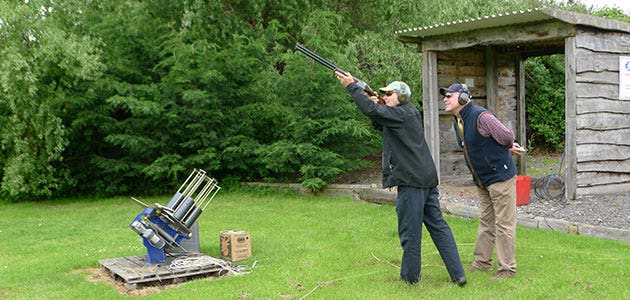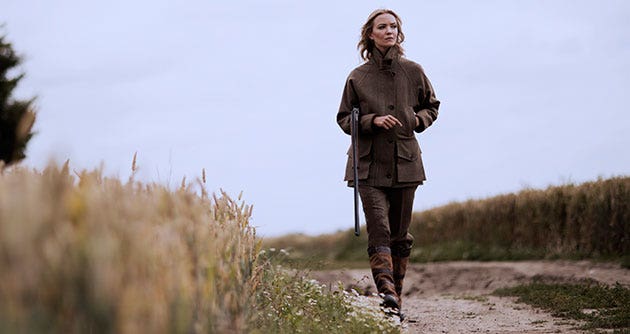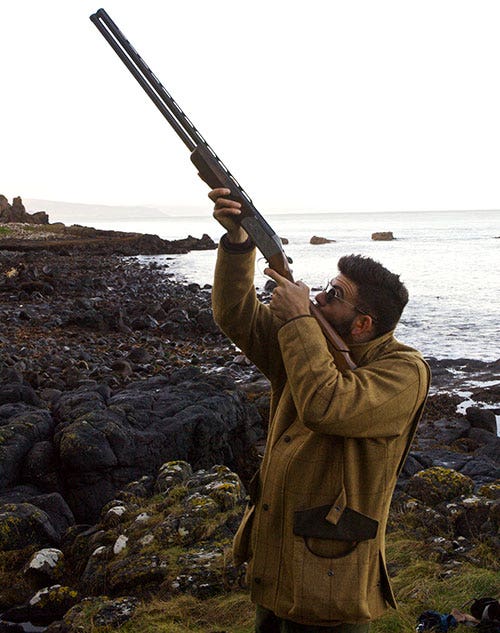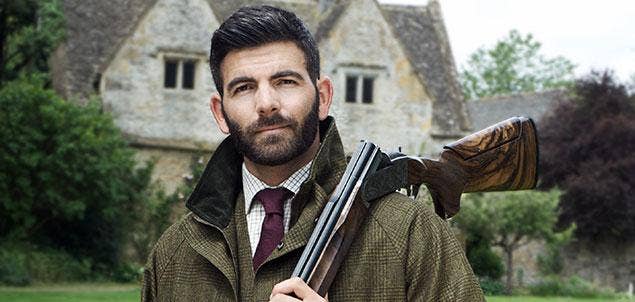With the clay season well and truly over and the game season in full swing, it’s a good time to talk about the growing number of clay shots who are looking to dip their toe into the game shooting world. This is exactly how I started my game shooting career and here I’m going to offer up a few suggestions on how you can safely enter the world of driven game shooting.
Thankfully, driven shooting is now more accessible than ever and the barriers to entry, as such, are purely financial. If you don’t know anyone in the industry, just pick a day to suit your pocket on something like the Guns on Pegs website, meet a team of like-minded guns, and get stuck in!

Do Some ‘Homework’
Before you do this, however, I would recommend doing a bit of ‘homework’ that will help you to appreciate just what is involved in putting birds over the line of guns, and just how many people are involved in making it happen.My first recommendation is to speak to any local shoots and ask if you can join the beating line for at least a few shoots.
Firstly, you will meet plenty of like-minded people and make some useful contacts for further down the line. But most importantly you will start to realise that unlike clay shooting, where you can simply turn up and pull the trigger, there are a lot of people putting a lot of effort into getting the birds over the guns and appreciating this for me is a big part of the day. Always take the time to greet and thank the beaters, without their hard work you won’t be shooting!
Similarly, if you can get some experience helping the pickers-up on a shoot it will serve you well, teaching you to mark pricked birds and keep a track of what has been shot and what needs picking. When you have finished a drive it is not like moving from stand to stand at a clay shoot, it is your responsibility to ensure any shot birds are picked, and to converse with the pickers to ensure no pricked birds get left behind. Feel free to lend a hand!
Once you have had a few days out doing the above, ask if it is possible to shadow a willing gun on a couple of days. Spending time on peg with an experienced gun will teach you a lot about what to shoot, and what not to shoot.
The main idea of this is to understand that you are NOT looking to pull the trigger on anything and everything that comes within range, but to select the best birds available on the day and to realise that sometimes leaving a bird will make a better shot to one of your neighbours. You are not there to let off as many shells as possible - save that for the clay ground! A solid rule when on the peg is if you are less than 100% sure of a shot (either for safety or for sporting reasons) then do not shoot. Don’t panic, there will be another one along in due course!
Shooting Safety Essentials
Safety is obviously the prime concern where any day out with guns is involved. Thankfully, coming from a clay shooting background this should have been drilled in already but a few points are always worth remembering. When not on a peg, ensure gun is broken and unloaded
When not on a peg, ensure gun is broken and unloadedThe only time the gun should be closed or loaded is when on peg when you are waiting for the birds. At all other times the gun will be empty, either open or in a slip. When on the peg keep barrels up (I rest the butt of the stock on my hip), safety on and finger away from the trigger. When re loading, make sure you close the gun with barrels down so there is never a point where you have a closed, loaded gun pointing toward the beaters.
Unlike clay shooting, where there are no concerns as to what targets you can and can’t shoot, you have to always bear in mind where the beaters and pickers up are positioned. This means you must only shoot if there is clear sky around your chosen bird. If in doubt, do not shoot!
As soon as the drive is over, unload and slip your gun immediately - before tidying up and helping to pick birds.
Shooting Clothes and Kit
 Ensure you have the correct gear
Ensure you have the correct gearOne of the things many new shooters worry about is what kit they need. Thankfully, this is very easy to sort and most people will already have the basics covered.
Firstly, clothing. You don’t need to go all out with a full tweed suit just yet. A smart pair of moleskin or cord trousers, check shirt, tie and wellies is more than adequate to start with. Most shooters will have these in their wardrobe already, if not check out the Farlows shooting clothing department!
If you decide to get into it more, then you can start to fill your wardrobe a little, this is all part of the fun!
Gun-wise, use whatever you shoot for clays (unless you shoot a semi-auto, in which case you might need to borrow something for the day). Don’t give it too much thought, as at the end of the day the mechanics of it are the same as clay shooting, the target is just a bit bigger and slower! Your first few shoots are very unlikely to be under high birds, so open chokes and light loads will be more than fine- 1/4 choke and a 30g 6 shot will be more than enough to deal with anything you need to address.
Shooting Footwork and Stance
If I had to give one bit of advice to a clay shooter to focus on before getting out in the field it would be footwork.As a group us clay shooters are not used to setting our feet for each shot, we tend to have a fixed stance that we know will work for the targets before us and we repeat it until the stand is shot. With game you won’t quite know what you are shooting until it has come half way towards you! This is no bad thing however, as it gives you time to visually lock into the bird and adjust your feet accordingly. Personally, I set up with a neutral foot position, leaving me comfortable for straight-driven birds. What this does is to allow me, with a small shift of my foot position, to move easily either right or left depending on what is driven towards me.
The first half of the bird’s flight you can use to decide where you need to place your feet, which still leaves you plenty of time for an unhurried mount and smooth swing through the bird. It is always best to give yourself more room at the end of your shot than the beginning, so turning a little more into the kill zone with your stance won’t hurt your chances at all. The key thing is to re-set for each shot and not look like you have your feet set in concrete!
If you can get to a tower with an oscillating trap (I use Sporting Targets at Bedford as my main base as they not only have a great set up, but also fantastic towers) this can be a great help as it gets you into the habit of moving your feet, after a while it becomes subconscious, just like shifting gears in your car.
Practising on clays will definitely help your mechanics. Work on driven presentations utilising swing through as a base technique and controlling your gun speed. Contrary to popular belief, most game (ignoring the extreme or high bird shoots) is actually missed in front - due to poor mechanics and excessive gun speed. If you find you are struggling then work on the basics, slow the move down and cut your lead right back - you may be surprised at the results.
Good luck and see you in the field!



